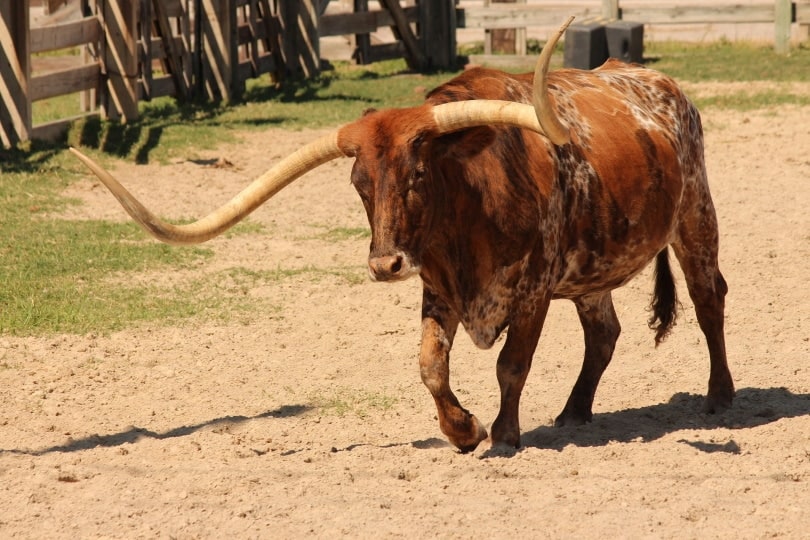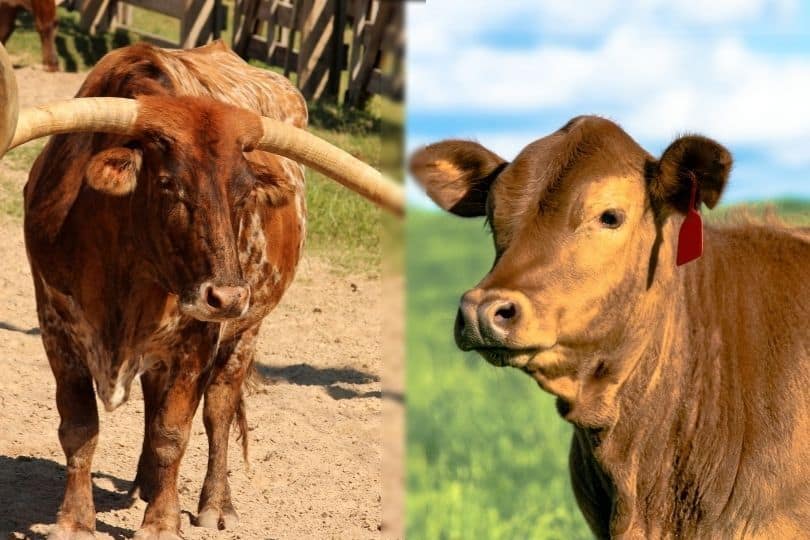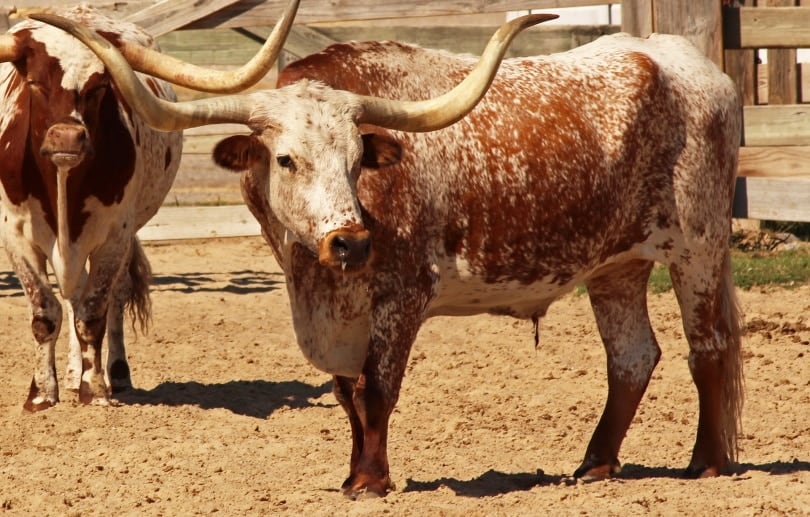If you are a cattle owner or breeder, you probably want to learn all you can about the different types of cattle available. One of the most popular types of cattle is the Longhorn, and one of the most common questions we get from new and experienced owners is what types of Longhorn cattle breeds are available. The answer is somewhat short because, as it turns out, there are very few.
Keep reading while we look at each one to help you understand the difference between these unique animals.

The 5 Types of Longhorn Cattle Breeds
1. Texas Longhorn

The Texas Longhorn is the parent breed of the longhorn types. It’s a tough and resistant breed with a calm and peaceful temperament, amazing reproductive abilities, and a long lifespan. It’s a dual-purpose cow that you can use to produce milk or meat, and you can find it in a wide variety of colors. It’s a medium-sized cow that typically weighs between 600 and 1,200 pounds and, as the name suggests, has two long horns, and each can extend more than 100 inches from the head.
The Texas Longhorn can survive on very sparse vegetation in almost any climate, especially the extreme heat of the West and South. Their horns help protect them from predators, including coyotes, wolves, and cougars, and their hardiness helped early settlers survive in the west. It’s well suited to beginner or hobby farmers and is also perfect for commercial facilities. Since these cattle are so respected, it’s not surprising that breeders only allow them to be used to create four variations.
2. Salorn
The Salorn cattle breed is a mix of the French Salers and the Texas Longhorn. The ideal blend is 5/8 French Saler and 3/8 Texas Longhorn. This mix attempts to add the Texas Longhorn adaptability to the Salorn’s high-quality meat and improved carcass quality. The result is a leaner beef that’s easier to raise in more environments and can improve other breeds around the world.
3. Geltex

The Geltex was created in 1988 by a breeder named Dr. Gillespie to help improve the beef industry. It mixes the Texas Longhorn, for its hardiness, reproductive ability, and good mothering instincts, with the larger size of the Gelbvieh, a much larger cow that can often weigh more than 1,700 pounds. These features allow for a fast-growing herd with the largest supply of meat.
4. Texon
Texon cattle mixes the Texas Longhorn and the Devon cattle breed. Breeders blended these two cattle to create an animal better suited to specific environments and conditions. Devon cattle are one of the oldest cattle breeds that can graze on poor quality land, while the Texas Longhorns are extremely durable and able to withstand most environments. Devon cattle produce beautifully marbled meat, while the Texas Longhorn provides meat high in healthy omega fats. The Texon provides the farmer with all of these wonderful features in one cow.
5. ALL Cattle
The ALL cattle is a blend of three cattle. An ALL cow is 25% Limousin, 25% Texas Longhorn, and 50% Angus. This mix helps produce cattle that provides the owner with a large amount of high-quality meat. It’s a great choice for small farms because the Limousin is a drought animal that will provide ALL cattle with the strength they need to help you pull carts and plows, making them incredibly versatile animals.

Final Thoughts
As you can see, the Texas Longhorn has been instrumental in creating a few breeds that can help improve the overall profit of a farmer’s herd while making them more adaptable to different environments. These improvements can also help improve the quality and production of other breeds, making them more profitable. Any of these types are perfect for the beginner or part-timer as well as the larger commercial farms.
Featured Image Credit: Pixabay
